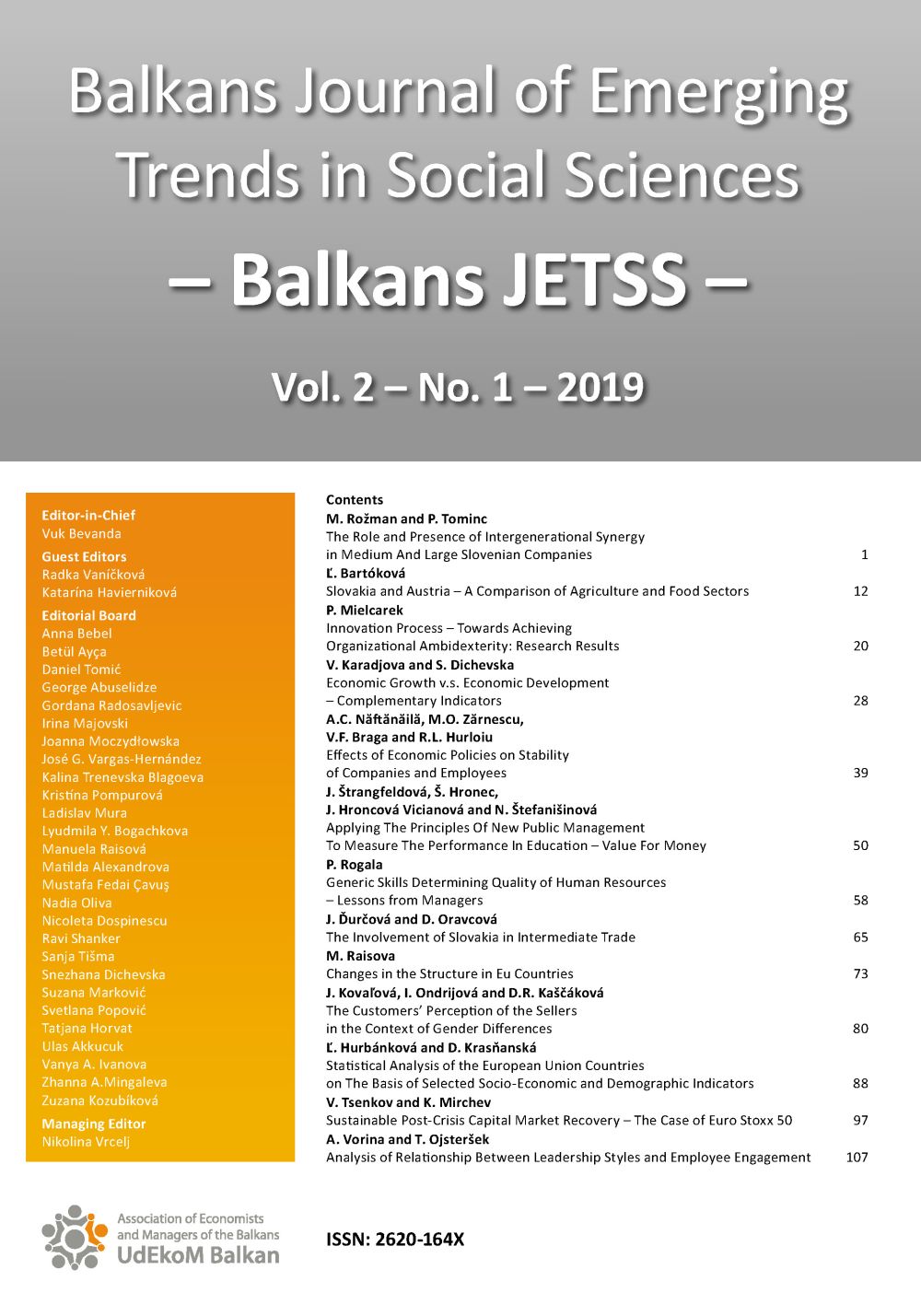STATISTICAL ANALYSIS OF THE EUROPEAN UNION COUNTRIES ON THE BASIS OF SELECTED SOCIO-ECONOMIC AND DEMOGRAPHIC INDICATORS
STATISTICAL ANALYSIS OF THE EUROPEAN UNION COUNTRIES ON THE BASIS OF SELECTED SOCIO-ECONOMIC AND DEMOGRAPHIC INDICATORS
Author(s): Ľubica Hurbánková, Dominika KrasňanskáSubject(s): National Economy, Supranational / Global Economy, Business Economy / Management, Socio-Economic Research
Published by: Udruženje ekonomista i menadžera Balkana
Keywords: Cluster analysis;European Union Countries;Method;
Summary/Abstract: The aim of the paper is to compare the European Union countries on the basis of selected socio-economic and demographic indicators for the year 2016. The following indicators are selected for analysis: gross domestic product per capita, government gross debt as a percentage of gross domestic product, inflation rate, unemployment rate, total fertility rate, infant mortality rate and crude divorce rate. The contribution of the paper is a division of the countries of the European Union into several groups using cluster analysis so that the countries belonging to the same cluster are as similar as possible and the countries belonging to different clusters are the least similar, or rather the most different. The cluster analysis consists of several steps: a selection of the type of clustering process (hierarchical and non-hierarchical, the hierarchical can be agglomerated or divisive), a selection of the aggregation method (the nearest neighbour method, the furthest neighbour method, the average distance method, the centroid method, the median method, the Ward method, the typical points method, the k-means method, a method of optimum centers or medoids and fuzzy clustering, all of which can be used as the aggregation method), a selection of similarity rate (such as the Euclidean distance, the Hamming distance, the Minkow distance, the Mahalabonis distance), a specification of the number of significant clusters (based on the standard deviation of variables creating one cluster, the determination coefficient, the semi partial coefficient of determination, the distances of clusters, the cubic clustering criterion), a cluster interpretation (the description of each cluster based on the observed characteristics). The application of individual statistical methods is implemented through the statistical programme SAS Enterprise.
Journal: Balkans Journal of Emerging Trends in Social Sciences Balkans JETSS
- Issue Year: 2/2019
- Issue No: 1
- Page Range: 88-96
- Page Count: 9
- Language: English

